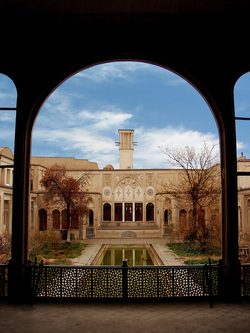HARAPPA

The site of the ancient city contains the ruins of a Bronze Agefortified city, which was part of the Cemetery H culture and the Indus Valley Civilization, centered in Sindh and the Punjab.[1] The city is believed to have had as many as 23,500 residents—considered large for its time.
The ancient city of Harappa was greatly destroyed under the British Raj, when bricks from the ruins were used as track ballast in the making of the Lahore-Multan Railroad.
In 2005 a controversial amusement park scheme at the site was abandoned when builders unearthed many archaeological artifacts during the early stages of construction work. A plea from the prominent Pakistani archaeologist Ahmed Hasan Dani to the Ministry of Culture resulted in a restoration of the site.[2]
HISTORY
The Indus Valley Civilization (also known as Harappan culture) has its earliest roots in cultures such as that of Mehrgarh, approximately 6000 BCE. The two greatest cities, Mohenjo-daro and Harappa, emerged circa 2600 BCE along the Indus River valley in Punjab and Sindh.[3] The civilization, with a writing system, urban centers, and diversified social and economic system, was rediscovered in the 1920s after excavations at Mohenjo-daro (which means "mound of the dead") in Sindh near Sukkur, and Harappa, in west Punjab south of Lahore. A number of other sites stretching from the Himalayan foothills in east Punjab, India in the north, to Gujarat in the south and east, and to Balochistan in the west have also been discovered and studied. Although the archaeological site at Harappa was partially damaged in 1857[citation needed] when engineers constructing the Lahore-Multan railroad (as part of the Sind and Punjab Railway), used brick from the Harappa ruins for track ballast, an abundance of artifacts has nevertheless been found.[4]
The ruins of Harrappa were first described in 1842 by Charles Masson in his Narrative of Various Journeys in Balochistan, Afghanistan, and the Punjab, where locals talked of an ancient city extending "thirteen cosses" (about 25 miles), but no archaeological interest would attach to this for nearly a century.[12]
In 1856, British engineers John and William Brunton were laying the East Indian Railway Company line connecting the cities of Karachi and Lahore. John wrote: "I was much exercised in my mind how we were to get ballast for the line of the railway." They were told of an ancient ruined city near the lines, called Brahminabad. Visiting the city, he found it full of hard well-burnt bricks, and "convinced that there was a grand quarry for the ballast I wanted," the city of Brahminabad was reduced to ballast.[13] A few months later, further north, John's brother William Brunton's "section of the line ran near another ruined city, bricks from which had already been used by villagers in the nearby village of Harappa at the same site. These bricks now provided ballast along 93 miles (150 km) of the railroad track running from Karachi to Lahore."[13] Excavated ruins of Mohenjo-daro, with the Great Bath in the front.
In 1872–75 Alexander Cunningham published the first Harappan seal (with an erroneous identification as Brahmi letters).[14] It was half a century later, in 1912, that more Harappan seals were discovered by J. Fleet, prompting an excavation campaign under Sir John Hubert Marshall in 1921–22 and resulting in the discovery of the civilization at Harappa by Sir John Marshall, Rai Bahadur Daya Ram Sahni and Madho Sarup Vats, and at Mohenjo-daro by Rakhal Das Banerjee, E. J. H. MacKay, and Sir John Marshall. By 1931, much of Mohenjo-Daro had been excavated, but excavations continued, such as that led by Sir Mortimer Wheeler, director of the Archaeological Survey of India in 1944. Among other archaeologists who worked on IVC sites before the partition of the subcontinent in 1947 were Ahmad Hasan Dani, Brij Basi Lal, Nani Gopal Majumdar, and Sir Marc Aurel Stein.
Following the Partition of India, the bulk of the archaeological finds were inherited by Pakistan where most of the IVC was based, and excavations from this time include those led by Sir Mortimer Wheeler in 1949, archaeological adviser to the Government of Pakistan. Outposts of the Indus Valley civilization were excavated as far west as Sutkagan Dor in Baluchistan, as far north as at Shortugai on the Amudarya or Oxus River in current Afghanistan
~
CULTURE AND ECONOMY

NOTES
City walls
Each city in the Indus Valley was surrounded by massive walls and gateways. The walls were built to control trade and also to stop the city from being flooded. Each part of the city was made up of walled sections. Each section included different buildings such as: Public buildings, houses, markets, and craft workshops.
Streets
The Harappans were great city planners. They based their city streets on a grid system. Streets were oriented east to west. Each street had a well organized drain system. If the drains were not cleaned, the water ran into the houses and silt built up. Then the Harappans would build another story on top of it. This raised the level of the city over the years, and today archaeologists call these high structures "mounds".
Wells
An old well in Lothal, a town near Harappa. The building styles of the two cities were fairly similar. Although not every Harappan house had a well, there are quite common and comprise one of the most recognizable features of Harappan urbanism. Over the years, the level of streets and houses were raised owing to the accumulation of debris (see above) which necessitated raising the height of the wells. This is the reason why very tall wells are often seen at Harappa and in surrounding areas.
Houses
Houses and other buildings were made of sun-dried or kiln-fired mud brick. These bricks were so strong, that they have stood up to thousands of years of wear. Each house had an indoor and outdoor kitchen. The outdoor kitchen would be used when it was warmer (so that the oven wouldn’t heat up the house), and the indoor kitchen for use when it was colder. In present day, village houses in this region (e.g. in Kachchh) have two kitchens (outdoor and indoor). They use indoor kitchen mostly as store house and use as cooking place only when there is raining outside, otherwise prefer using outdoor kitchen. This is because people use dry shrub and cow dung as cooking fuel which is very smoky and makes indoor cooking difficult.
Tools
The Harappans used chisels, pickaxes, and saws. The saws they used had undulated edges so that dust escaped from the cut that they were sawing. These tools were most likely made of copper, as copper tools and weapons have been found at Harappan sites.
Lack of temples So far
no unequivocal examples of temples have been found at sites belonging to the Indus Valley Civilization. Archaeologists do not know yet what religion was practiced in the Indus Valley Civilization. Community water pools (swimming or bathing) do exist, which may be linked with religion practice. Water plays an important role in Hindu sacred places, and pilgrimage to such places often involves sacred bathing (apart from Ganges). The architecture of water pools used by Hindu pilgrimage and in Harappan cities are similar, although scholars disagree whether such similarities are functional, or cultural, in nature
